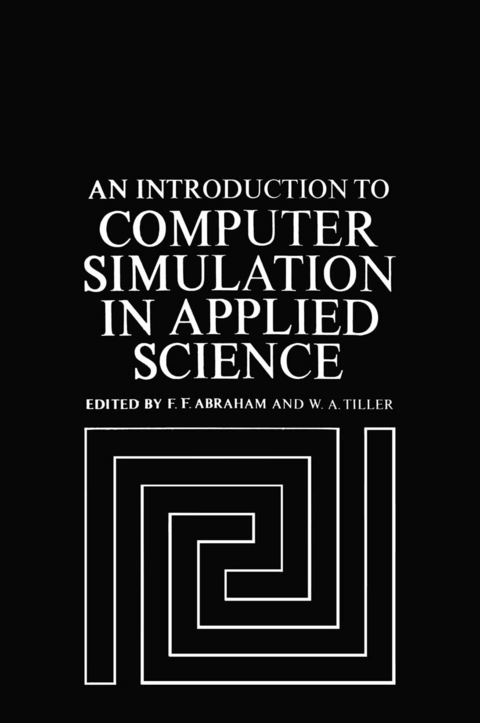
An Introduction to Computer Simulation in Applied Science
Springer-Verlag New York Inc.
978-1-4684-1976-4 (ISBN)
This set of lectures is the outgrowth of a new course in the Department of Materials Science at Stanford University. It was taught collectively by the authors of the various sections and represents an attempt to increase the awareness of students in the materials area of computer simulation techniques and potentialities. The topics often ranged far afield from the materials area; however, the total package served the intended purpose of being an initiation into the world of computer simulation and, as such, made a useful first iteration to the intended purpose. The second iteration, which is in process, deals exclusively with the materials area. The course was designed to teach students a new way to wrestle with "systems" problems in the materials science work area that require the synthesis and interactions of several disciplines of knowledge. This course was a response to the realization that effective handling of real problems, which are essentially systems problems, is one of the most important at tributes of a graduate materials scientist. About a third of the course was devoted to the student's selected problem, in the materials area, which he simulated using the digital computer.
1. Rationale for Computer Simulation in Materials Science.- I. Introduction.- II. Patterns of Science.- III. The Student and His Research.- IV. Examples of Systems Events in the Crystallization Area.- 2. Lectures on Large-Scale Finite Difference Computation of Incompressible Fluid Flows.- I. The Differential Equations.- II. Stability Analysis of the Difference Equations.- III. Applications of the Numerical Program for Incompressible Flow.- IV. Description of the Numerical Program for Incompressible Flow.- Appendix: Computer Listings of the Hydrodynamic Programs.- 3. Computer Simulation of Diffusion Problems Using the Continuous System Modeling Program Language.- I. Introduction.- II. System/360 Continuous System Modeling Program (S/360 CSMP).- III. Heat Transfer in an Insulated Bar.- IV. The Freezing of a Liquid.- 4. Computer Simulation of Vapor Deposition on Two-Dimensional Lattices.- I. Basic Concepts of Physical Processes.- II. The Computer Simulation Model.- III. Random Numbers and Simulation Strategy.- IV. Real and Simulated Time.- V. The VDS Programs.- VI. The Computer Simulation Results.- References.- Appendix: Fortran Code.- 5. Introduction to Computational Theoretical Chemistry.- I. Basic Concepts of Computational Theoretical Chemistry.- II. The Nature of the Problem.- III. Real Molecular Systems.- IV. The Calculation of Quantum-Mechanical Two-Electron Multi-center Integrals via Transformation Theory.- V. Computational Results.- References.- Appendix: Fortran Code.- 6. Numerical Simulation of Weather.- I. Physical Phenomena.- II. Numerical Methods.- III. Computer Requirements.- References.
| Zusatzinfo | XIV, 220 p. |
|---|---|
| Verlagsort | New York, NY |
| Sprache | englisch |
| Maße | 152 x 229 mm |
| Themenwelt | Schulbuch / Wörterbuch |
| Informatik ► Grafik / Design ► Digitale Bildverarbeitung | |
| Mathematik / Informatik ► Informatik ► Theorie / Studium | |
| Naturwissenschaften | |
| Sozialwissenschaften | |
| ISBN-10 | 1-4684-1976-5 / 1468419765 |
| ISBN-13 | 978-1-4684-1976-4 / 9781468419764 |
| Zustand | Neuware |
| Haben Sie eine Frage zum Produkt? |
aus dem Bereich


